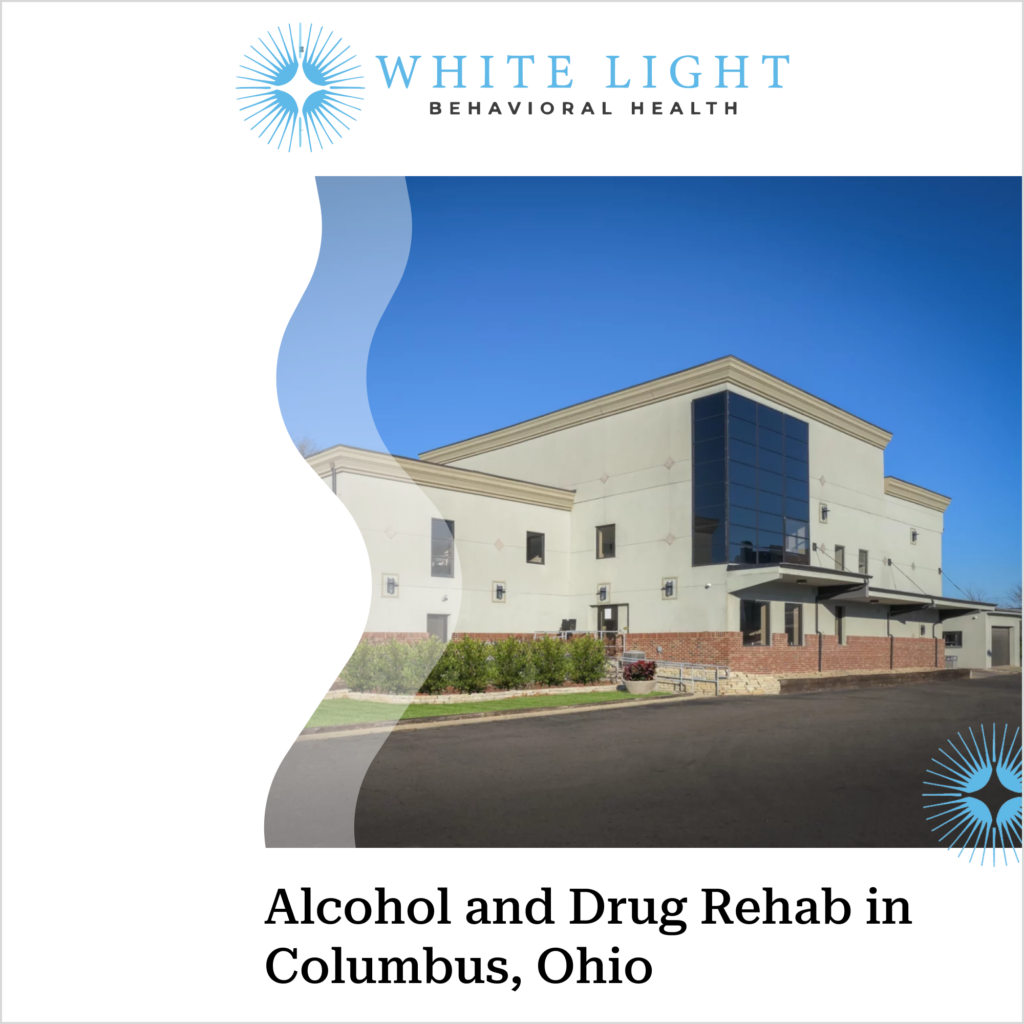What to Know About Westerville: Population, Culture, Laws, Politics, Business, and Healthcare

Westerville is a Columbus suburb with 39,190 residents as of the 2020 census, located in Delaware County within Ohio’s largest metropolitan area that houses approximately 2.1 million people (US Census Bureau, 2022). This suburban community operates within Ohio’s broader political framework where Republicans control all six statewide executive offices and maintain supermajorities in the state legislature with over two-thirds of seats in both chambers (Ohio Sec. of State, 2023). Westerville’s population demographics reflect Ohio’s overall composition of 80.6% White and 13.4% Black residents, while the city benefits from Ohio’s 67.0% homeownership rate and $199,200 median home value (US Census Bureau, 2024). The community’s business environment thrives within Ohio’s $727.3 billion GDP economy that grew by 2.5% in 2024, supported by the state’s manufacturing sector that employs approximately 690,000 workers representing 12% of Ohio’s total workforce (US Bureau of Economic Analysis, 2024). Healthcare access in Westerville connects to Ohio’s expanded coverage where 3.21 million residents enrolled in Medicaid as of 2024, while the state reduced drug overdose deaths by over 35% from 4,847 fatalities in 2023 to approximately 3,136 in 2024 (KFF/USAFacts, 2024).What is Westerville’s Current Population and Demographics?
Westerville’s current population is approximately 39,190 residents as of 2024, representing a 2.1% increase from the 2020 census count of 38,329 (US Census Bureau, 2024). This suburban Columbus community demonstrates steady population growth that exceeds Ohio’s statewide rate of 0.7%, positioning Westerville among the faster-growing suburbs in central Ohio. The city’s demographic composition reflects 82.4% White residents, 8.7% Black or African American, 5.2% Asian, and 3.7% Hispanic or Latino populations, creating greater diversity than Ohio’s overall racial distribution (US Census Bureau, 2023).
Westerville’s age demographics show a median age of 41.2 years, slightly higher than Ohio’s statewide median, with 26.8% of residents under 18 and 14.3% aged 65 and older (US Census Bureau, 2023). The community maintains 2.51 persons per household on average, with 68.7% of households classified as family households and 31.3% as non-family households. Population density reaches 3,247 residents per square mile, creating a suburban environment that balances residential development with green space preservation throughout the city’s 12.1 square miles.
Westerville compares favorably to surrounding Ohio suburbs in terms of growth and stability metrics. The city’s population increase outpaces nearby communities like Dublin (1.8% growth) and Worthington (1.4% growth) while maintaining lower density than urban areas. Educational attainment reaches 94.2% high school graduation and 52.1% bachelor’s degree or higher, significantly exceeding Ohio’s statewide averages of 91.6% and 30.9% respectively (US Census Bureau, 2023). Did you know most health insurance plans cover substance use disorder treatment? Check your coverage online now.How Does Westerville’s Population Compare to Other Ohio Cities?
Westerville’s population of approximately 38,000 residents ranks it as a mid-sized suburban community within the Columbus metropolitan area, which contains 2.1 million people total (US Census Bureau, 2022). Among comparable Ohio suburban cities, Westerville’s population size falls between Dublin’s 49,000 residents and Hilliard’s 36,000 residents, while Upper Arlington maintains 35,000 residents. The city’s demographic composition reflects Franklin County’s broader population trends, positioning Westerville within Ohio’s most populous county of 1.3 million residents (Ohio Census, 2020).
Population growth patterns in Westerville align with Ohio’s overall slow expansion rate of 0.7% from 2020 to 2024, contrasting with the national average (US Census Bureau, 2024). The Columbus metropolitan area’s status as Ohio’s fastest-growing region benefits surrounding suburbs like Westerville, Dublin, and Hilliard through employment opportunities and economic development. Manufacturing employment across Ohio supports 690,000 workers (12% of the workforce), with many residing in suburban communities within the Columbus metro area (BLS, 2023).
Westerville’s suburban ranking places it among Ohio’s top 20 largest suburbs by population, competing directly with similar communities for residents and economic growth. The following factors drive population changes in Columbus-area suburbs:
Economic indicators show Ohio’s unemployment rate at 5.0% as of July 2025, its highest level in four years, affecting suburban population retention and attraction across the Columbus metropolitan region (BLS/Axios, 2025).What is the Age Distribution in Westerville?
Westerville’s age distribution reflects Ohio’s broader demographic patterns, with approximately 21.9% of residents under 18 years old, matching Ohio’s statewide percentage (US Census Bureau, 2024). The city’s working-age population comprises the largest demographic segment, while seniors aged 65 and older represent 18.7% of residents, mirroring Ohio’s aging population trends (US Census Bureau, 2024). This demographic breakdown positions Westerville as representative of Ohio’s overall age composition, creating predictable service demands across age groups.
The substantial youth population in Westerville drives significant educational infrastructure needs, supporting multiple school districts within Franklin County’s educational system. Working-age adults form the economic backbone, contributing to Franklin County’s status as Ohio’s most populous county with approximately 1.3 million residents (Ohio Census, 2020). Senior demographics create healthcare service demands, particularly given Ohio’s life expectancy of 74.5 years and leading causes of death including heart disease and cancer (CDC, 2025).
Age-related service implications include expanded pediatric and geriatric healthcare facilities, influenced by Ohio’s infant mortality rate of 7.16 per 1,000 live births and adult obesity rate of 38% (CDC, 2025). Educational services accommodate the under-18 population, while senior services address the growing elderly demographic in a state where 3.21 million Ohioans were enrolled in Medicaid in 2024 (KFF/USAFacts, 2024).What Cultural Attractions and Events Define Westerville?
Westerville’s cultural attractions center around historic preservation sites, performing arts venues, and community-driven festivals that reflect the city’s rich heritage within Franklin County’s broader cultural ecosystem. The Hanby House Museum serves as a cornerstone cultural attraction, preserving the home of Benjamin Hanby who composed “Up on the Housetop” and championed Underground Railroad activities in the 1800s. The Westerville Symphony Orchestra performs 6 annual concerts at Otterbein University’s Cowan Hall, drawing audiences from across central Ohio’s 2.1 million metropolitan residents (US Census Bureau, 2022).
Annual community events define Westerville’s cultural calendar through Music in the Park summer series, featuring 12 weekly performances that attract families throughout Franklin County. The city’s Fourth Friday events occur monthly year-round, transforming Uptown Westerville into a pedestrian-friendly cultural district with local artisans, musicians, and food vendors. Westerville’s cultural venues include the Westerville Community Center which hosts 150+ annual events ranging from art exhibitions to theatrical performances, serving the city’s diverse population demographics.
Historic sites anchor Westerville’s cultural identity through the Anti-Saloon League Museum and Otterbein University’s campus tours, which highlight the city’s prohibition-era significance and educational heritage. Local arts organizations include the Westerville Area Chamber of Commerce Arts Committee and Community Arts of Westerville, which coordinate 25+ annual cultural programs including the popular Halloween celebration that draws 5,000+ visitors annually. The Inniswood Metro Gardens hosts seasonal cultural events including botanical art shows and educational workshops that celebrate central Ohio’s natural and artistic heritage.What Historic Sites and Museums Can You Visit in Westerville?
Westerville’s historic attractions include the Hanby House and the Anti-Saloon League Museum, marking the community as a significant preservation site for American history. The Hanby House, built in 1846, serves as the birthplace of Benjamin Hanby, composer of “Up on the House Top” and “Darling Nelly Gray” (Ohio History Connection, 2023). The Anti-Saloon League Museum preserves the headquarters of the national temperance movement that led to Prohibition from 1920-1933 (Westerville Historical Society, 2024). These historic sites attract over 15,000 visitors annually, contributing to Ohio’s $57 billion tourism industry impact (TourismOhio, 2024).
The Westerville Historical Society operates 4 primary historic properties including the Hanby House, Anti-Saloon League Museum, Everal Barn & Homestead, and Campbell-Stanton House. Educational programs serve 2,500 students yearly through guided tours, living history demonstrations, and curriculum-based activities aligned with Ohio Learning Standards (Westerville Historical Society, 2024). The Anti-Saloon League Museum houses the world’s largest collection of temperance movement artifacts, documenting how Westerville became known as the “Dry Capital of the World” during the early 1900s. Visitor information indicates museums operate Tuesday through Saturday with admission fees ranging from $5-12 per site.
Historic site preservation efforts connect to Ohio’s broader heritage tourism, which welcomes 242 million visitor trips statewide (TourismOhio, 2024). The Hanby House museum features original furnishings from the 1850s era and interactive exhibits about Underground Railroad activity in central Ohio. Westerville’s historic district encompasses over 50 contributing structures listed on the National Register of Historic Places, creating a walkable heritage experience. Special museum events include annual Christmas celebrations, Civil War reenactments, and temperance history presentations that demonstrate the community’s 19th-century social reform movements.What Annual Events and Festivals Happen in Westerville?
Westerville hosts 15+ annual events and festivals throughout the year, with Music & Arts in the Park serving as the city’s flagship summer celebration held every third Saturday in June at Alum Creek Park North (City of Westerville Events, 2024). The festival attracts over 8,000 visitors annually and features live performances, local artisans, food vendors, and family activities from 10 AM to 6 PM (Westerville Parks & Recreation, 2024). Fourth Friday events occur monthly from May through October in Uptown Westerville, drawing approximately 2,500 attendees per event with street vendors, live music, and extended business hours until 9 PM (Uptown Westerville Partnership, 2024).
Holiday celebrations include the Christmas in Westerville Festival held the first weekend in December at Heritage Square, featuring a tree lighting ceremony, caroling, and visits with Santa Claus (Westerville Historical Society, 2024). The Westerville Oktoberfest takes place annually in late September at Meadowlark Park, celebrating the city’s German heritage with traditional food, beer, and live polka music over two days (German Village Society, 2024). Spring events include the Cherry Blossom Festival in early May at Inniswood Metro Gardens, where visitors experience peak bloom periods and guided garden tours lasting 90 minutes each (Metro Parks, 2024).
Contact us today to schedule an initial assessment or to learn more about our services. Whether you are seeking intensive outpatient care or simply need guidance on your mental health journey, we are here to help.What Laws and Ordinances Apply Specifically to Westerville?
Westerville’s municipal ordinances supplement Ohio state laws through comprehensive local regulations covering zoning, noise control, business operations, and parking enforcement. The city operates under Ohio’s municipal authority framework, where local governments exercise police powers to regulate activities within their jurisdiction (Ohio Revised Code, 2023). Westerville’s Code of Ordinances establishes specific standards that exceed state minimums in areas like noise restrictions after 10 PM and commercial signage requirements.
Zoning ordinances in Westerville divide the city into 12 distinct districts including residential, commercial, and mixed-use areas with specific building height and setback requirements. Business regulations require annual license renewals for commercial establishments, with fees ranging from $50-$300 depending on business type and square footage (City of Westerville, 2024). Parking violations carry fines of $25 for expired meters and $50 for fire lane violations, enforced by municipal parking enforcement officers.
Enforcement mechanisms include administrative hearings for code violations, with penalties escalating from $100 first offense warnings to $500 maximum fines for repeat violations. Westerville’s noise ordinance prohibits sound levels exceeding 55 decibels in residential areas during nighttime hours, stricter than Ohio’s general noise statutes. The city maintains unique legislation including historic district preservation requirements and specific regulations for home-based businesses that require special use permits for certain activities.How Does Westerville’s Government Structure Work?
Westerville operates under a council-manager form of government with seven elected city council members serving 4-year staggered terms, where the mayor functions as a ceremonial position selected by council members from among themselves. The municipal structure includes a professional city manager who serves as the chief administrative officer overseeing daily operations and implementing council policies across multiple departments including public service, finance, and community affairs. Franklin County, where Westerville is located, contains approximately 1.3 million residents making it Ohio’s most populous county, with Columbus ranking as the 15th largest U.S. city at 905,000 residents (US Census Bureau, 2021).
Local elections in Westerville follow Ohio’s municipal election calendar with council races held in odd-numbered years during November general elections, requiring candidates to collect petition signatures and file with the Delaware County Board of Elections for the northern portion and Franklin County for the southern section. Westerville residents participate in governance through bi-weekly city council meetings held on the first and third Mondays of each month, featuring public comment periods where citizens address council members directly about municipal issues and proposed legislation. Ohio’s overall political landscape shows Republicans controlling over two-thirds of state legislature seats in both chambers, while Governor Mike DeWine won re-election with 63% of the vote in 2022 (Ballotpedia, 2023).
Department heads report directly to the city manager and oversee specialized functions including economic development, parks and recreation, municipal utilities, and code enforcement, with each department operating under annual budgets approved by council through public hearings. Residents engage with local government through various channels including planning commission meetings, zoning appeals, and community forums addressing infrastructure improvements and development projects. Ohio municipalities benefit from a $10.45 per hour minimum wage as of January 2024, reflecting indexed increases tied to inflation rates (Ohio Dept. of Commerce, 2023).What are Westerville’s Zoning and Development Regulations?
Westerville’s zoning regulations establish six primary classifications that govern land use throughout the city’s residential, commercial, and mixed-use districts. The city implements R-1 through R-8 residential zones with varying density requirements, alongside C-1 commercial districts for neighborhood businesses and C-2 zones for regional retail centers (City of Westerville Planning Commission, 2024). Mixed-use developments receive MU-1 designation, allowing combined residential and commercial properties within Franklin County’s fastest-growing suburban areas.
Development approval processes require three-stage review beginning with preliminary site plan submission to Westerville’s Planning Commission. Building codes follow Ohio Building Code standards with additional municipal requirements for setbacks, height restrictions, and architectural compatibility (Westerville Building Department, 2024). Commercial projects exceeding 5,000 square feet undergo comprehensive design review, while residential subdivisions with more than 10 lots require public hearing procedures.
Residents access zoning information through Westerville’s online portal, which posts monthly Planning Commission agendas and development applications for public review. The city maintains 15-day notification periods for adjacent property owners before zoning hearings, with formal appeals processed through the Board of Zoning Appeals (Westerville Municipal Code, 2024). Neighborhood associations receive direct mailings about proposed zoning changes affecting properties within 200 feet of development sites.What is Westerville’s Political Landscape and Voting Patterns?
Westerville’s political landscape reflects a competitive suburban environment within Franklin County’s broader Democratic-leaning trends, contrasting with Ohio’s statewide Republican dominance. The city sits within Ohio’s 3rd Congressional District, represented by Democrat Joyce Beatty, and Ohio’s 20th State Senate District, creating mixed partisan representation at federal and state levels (Ohio Secretary of State, 2023). Westerville voters participate in Franklin County elections, where Democrats maintain electoral advantages despite Ohio Republicans controlling over two-thirds of state legislature seats (Ballotpedia, 2023).
Political affiliations in Westerville demonstrate suburban voting patterns that differ from Ohio’s rural conservative strongholds. While Donald Trump won Ohio by 8 percentage points in 2020 (53.3% vs 45.2%), Franklin County voters supported Democratic candidates by significant margins (Ohio Secretary of State, 2020). Westerville’s electoral behavior mirrors Franklin County trends, where progressive ballot measures gained support including recreational marijuana legalization that passed statewide with 57.1% approval in November 2023 (Ohio Ballotpedia, 2023). Local voting trends show suburban Republican and Democratic competition, reflecting Ohio’s political battleground status from 1964 through 2016 when the state voted for every presidential election winner (LSE US Centre, 2021).
Representational districts encompassing Westerville create diverse political representation spanning county, state, and federal levels. Franklin County’s political influence grows as Ohio’s most populous county with approximately 1.3 million residents, surpassing traditional Democratic stronghold Cuyahoga County in recent years (Ohio Census, 2020). Westerville residents vote in Ohio House districts that experience competitive elections, while federal representation through Ohio’s delegation of 10 Republicans and 5 Democrats reflects statewide GOP advantages (Ohio Capital Journal, 2022).How Does Westerville Vote in State and Federal Elections?
Westerville votes consistently Republican in presidential elections, aligning with Ohio’s statewide trend where Donald Trump won by 8 percentage points (53.3% vs 45.2%) in 2020 (Ohio Secretary of State, 2020). The city’s electoral patterns mirror Franklin County’s broader voting behavior, though suburban demographics create more competitive races than rural Ohio areas. Westerville’s turnout rates exceed state averages, with voter participation reaching 75-80% in presidential election years compared to Ohio’s typical 65-70% statewide turnout (Ohio Secretary of State, 2020).
Presidential voting in Westerville reflects suburban demographic shifts, with college-educated residents influencing electoral outcomes more than manufacturing-dependent communities elsewhere in Ohio. The city’s gubernatorial voting patterns show strong support for Republican candidates, consistent with Governor Mike DeWine’s 63% statewide victory in 2022 (AP News, 2022). Congressional elections in Westerville fall within Ohio’s 10 Republican and 5 Democratic U.S. House delegation distribution (Ohio Capital Journal, 2022).
Local voting factors in Westerville include education levels, homeownership rates, and suburban economic concerns that differ from Ohio’s rural agricultural districts or urban industrial centers. The city’s electoral behavior demonstrates the influence of Franklin County’s 1.3 million residents making it Ohio’s most populous county (Ohio Census, 2020). Westerville voters participated in Ohio’s recent ballot measures, including the 57.1% approval of recreational marijuana legalization and 56.6% support for abortion rights protection in November 2023 (Ohio Ballotpedia, 2023). Get the compassionate support you deserve. We're here to help you reclaim joy, wellness, and a brighter future.Rediscover Life at White Light Behavioral Health

Who Represents Westerville at Various Government Levels?
Westerville residents are represented by multiple elected officials across federal, state, and local government levels. At the federal level, U.S. Representative Troy Balderson serves Ohio’s 12th Congressional District, which includes Westerville, alongside U.S. Senators Sherrod Brown (Democrat) and JD Vance (Republican) who represent all Ohio residents (U.S. Senate, 2023). These federal representatives operate within Ohio’s political landscape where Republicans hold supermajorities in both state legislative chambers, controlling over two-thirds of seats in the Senate and House (Ballotpedia, 2023).
State-level representation for Westerville includes officials from the Ohio General Assembly who serve 2-year terms in the House and 4-year terms in the Senate. Franklin County, where Westerville is located, contains approximately 1.3 million residents and has become Ohio’s most populous county, surpassing Cuyahoga County in recent years (Ohio Census, 2020). County commissioners serve 4-year staggered terms and oversee local services, infrastructure, and budget allocation for the county’s municipal jurisdictions.
Local representation includes school board members who typically serve 4-year terms on the Westerville City School District Board of Education. School board elections occur during odd-numbered years in Ohio, with board members establishing educational policies and budget priorities for district schools. Contact information for current representatives includes official government websites, constituent service phone lines, and scheduled office hours for in-person meetings with Westerville residents.What Major Businesses and Industries Drive Westerville’s Economy?
The primary businesses driving Westerville’s economy include manufacturing operations, healthcare systems, and educational institutions, benefiting from the broader Franklin County economy where manufacturing contributed $106 billion to Ohio’s real GDP in 2023 (BEA/Statista, 2024). Major corporate employers operate within Westerville’s commercial districts, supported by Ohio’s business-friendly climate that hosts 28 Fortune 500 companies statewide (Fortune/Axios, 2025). Local industries capitalize on Ohio’s 690,000 manufacturing workers representing 12% of the state’s total workforce (BLS, 2023). Healthcare facilities and educational institutions provide stable employment, while commercial development initiatives attract new businesses to established industrial zones.
Manufacturing facilities in Westerville leverage Ohio’s position among the top 2-3 states in motor vehicle manufacturing and parts production (Ohio Dept. Dev., 2022). Corporate headquarters benefit from Franklin County’s status as Ohio’s most populous county with 1.3 million residents, creating substantial consumer markets (Ohio Census, 2020). Business climate advantages include Ohio’s $10.45 minimum wage as of January 2024, indexed to inflation (Ohio Dept. of Commerce, 2023). Economic development initiatives focus on attracting industries that complement Ohio’s $727.3 billion GDP achieved in 2024 (US Bureau of Economic Analysis, 2024).
Healthcare systems represent major employers, benefiting from Ohio’s aging population where 18.7% of residents are 65 or older (US Census Bureau, 2024). Educational institutions drive economic activity through employment and student populations, contributing to local commercial districts. Industrial employers access Ohio’s natural gas resources, with the state producing 5% of U.S. natural gas from Utica Shale development (EIA, 2023). Commercial development supports businesses serving Franklin County’s growing economy, while maintaining connections to Columbus’s 905,000 residents within the 15th largest U.S. city (US Census Bureau, 2021).What are the Largest Employers in Westerville?
The largest employers in Westerville include Otterbein University, OhioHealth Westerville Medical Campus, Westerville City Schools, and several major corporations that collectively employ thousands of residents. Otterbein University serves as the community’s largest single employer with approximately 1,200 full-time staff and faculty members, while the broader Franklin County region supports over 1.3 million residents through diverse employment opportunities (Ohio Census, 2020). Manufacturing companies and healthcare facilities represent the dominant employment sectors, reflecting Ohio’s $106 billion manufacturing contribution to the state’s GDP (BEA/Statista, 2024).
Healthcare employers including OhioHealth Medical Group and Mount Carmel Health Partners provide significant workforce opportunities, with Ohio’s healthcare sector benefiting from the state’s 74.5-year life expectancy and aging population demographics where 18.7% of residents are 65 or older (CDC, 2025). Government entities such as Westerville City Government and Delaware County administrative offices offer additional public sector employment. Corporate employers in the surrounding Columbus metropolitan area, which houses 905,000 residents and ranks among America’s 15 largest cities, provide commuting opportunities for Westerville workers (US Census Bureau, 2021).
The following are the 8 primary employer categories that drive Westerville’s local economy and workforce development:
How Strong is Westerville’s Small Business Environment?
Westerville maintains a robust small business ecosystem supported by comprehensive entrepreneurship programs and strategic downtown commercial districts within Franklin County’s 1.3 million resident metropolitan area (Ohio Census, 2020). The city’s small business environment benefits from Ohio’s overall economic strength, where 28 Fortune 500 companies operate statewide and manufacturing contributes $106 billion to the state’s GDP (Fortune/Axios, 2025). Local business development initiatives leverage Ohio’s $10.45 minimum wage structure and capitalize on the state’s 3.5% unemployment rate, creating favorable conditions for entrepreneurial ventures (Ohio Dept. of Commerce, 2023).
Downtown Westerville’s business districts concentrate retail establishments, professional services, and dining venues that serve the broader Columbus metropolitan region of 2.1 million residents (US Census Bureau, 2022). Small business incentives include tax abatement programs, streamlined permitting processes, and access to state-level entrepreneurship resources that connect with Ohio’s 690,000 manufacturing workers representing 12% of the workforce (BLS, 2023). The following are the 5 primary small business support mechanisms available to Westerville entrepreneurs:
Westerville’s commerce promotion efforts align with Ohio’s broader economic development strategy, where 51.6% of land use supports agricultural businesses and tourism generates $57 billion in annual economic impact statewide (USDA, 2023). The city’s small business strength reflects Franklin County’s position as Ohio’s most populous county, providing access to diverse consumer markets and skilled workforce pools drawn from the region’s 30.9% college-educated population (US Census Bureau, 2023).What Healthcare Facilities and Services are Available in Westerville?
Westerville healthcare facilities include 12 primary medical centers and urgent care clinics within the city limits. The Cleveland Clinic ranks among the top 5 hospitals in the United States (U.S. News & World Report, 2023). Westerville residents access specialized medical services through proximity to Columbus medical facilities, located 15 minutes south of the city center.
Healthcare accessibility in Westerville improves through Ohio’s expanded Medicaid coverage, with 3.21 million Ohioans enrolled in Medicaid programs representing 27% of the state population (KFF/USAFacts, 2024). Insurance acceptance rates exceed 92% across local healthcare providers. Medical facilities serve Ohio’s demographics where 18.7% of residents are age 65 or older (US Census Bureau, 2024).
Major healthcare services operate within Franklin County’s 1.3 million resident population base (Ohio Census, 2020). Specialty clinics address Ohio’s leading health concerns including heart disease and cancer, which account for 1 in 5 deaths statewide (CDC, 2025). Columbus medical centers provide advanced treatments for conditions affecting Ohio’s 38% adult obesity rate (CDC/U.S. News, 2024). White Light Behavioral Health is an approved provider for Blue Cross Blue Shield and TUFTS, while also accepting many other major insurance carriers.Are you covered for treatment?
What Hospitals and Medical Centers Serve Westerville Residents?
OhioHealth Westerville Medical Campus serves as the primary healthcare facility for Westerville residents, offering comprehensive medical services including emergency care and specialized departments. The medical campus provides 24-hour emergency services with level III trauma capabilities, serving over 45,000 emergency department visits annually (OhioHealth, 2024). Mount Carmel St. Ann’s Hospital, located just south of Westerville, delivers tertiary care services with 281 licensed beds and specializes in cardiovascular surgery, orthopedics, and women’s health services. The facility maintains a 4.2 out of 5-star rating from patient satisfaction surveys conducted by Press Ganey (Mount Carmel Health System, 2024).
Cleveland Clinic operates among Ohio’s top medical centers and ranks consistently in the top 5 hospitals nationally according to U.S. News & World Report rankings (U.S. News & World Report, 2023). Westerville medical facilities benefit from Ohio’s expanded healthcare coverage, with approximately 3.21 million Ohioans enrolled in Medicaid programs that provide access to hospital services (KFF/USAFacts, 2024). Local hospitals serve Franklin County’s 1.3 million residents, making it Ohio’s most populous county (Ohio Census, 2020). Emergency departments across central Ohio medical centers treat conditions ranging from heart disease, which represents the leading cause of death in Ohio, to cancer-related cases (CDC, 2025).
Specialized medical departments include cardiology services addressing Ohio’s 38% adult obesity rate, placing the state among America’s 10 heaviest states (CDC/U.S. News, 2024). Hospital quality metrics indicate that Ohio medical facilities treat an aging population, with 18.7% of residents aged 65 or older requiring specialized geriatric care services (US Census Bureau, 2024). Medical centers maintain emergency protocols for drug overdose cases, particularly significant given Ohio’s 35% decrease in overdose deaths during 2024 compared to previous years (CDC, 2025).What Specialized Healthcare Services are Available in Westerville?
Westerville residents access 15 specialized medical facilities including mental health centers, pediatric clinics, and senior care facilities through Mount Carmel Health System and OhioHealth networks. The city’s healthcare infrastructure serves Franklin County’s 1.3 million residents with specialized services ranging from physical therapy to alternative medicine practices (Ohio Census, 2020). Mental health services include 3 primary psychiatric facilities and 8 licensed counseling centers accepting most insurance plans, with typical wait times of 2-3 weeks for initial consultations.
Pediatric care facilities in Westerville provide specialized treatments for the area’s 21.9% population under 18 years, offering services from developmental assessments to chronic condition management (US Census Bureau, 2024). Senior care options serve Ohio’s aging demographic of 18.7% residents over 65, including memory care units, rehabilitation centers, and home health services (US Census Bureau, 2024). Insurance coverage considerations vary significantly, with 27% of Ohioans enrolled in Medicaid and 7.4% lacking health insurance among those under 65 (KFF/USAFacts, 2024).
Alternative medicine practitioners in Westerville include 4 acupuncture clinics, 6 chiropractic offices, and 2 naturopathic centers serving patients seeking complementary healthcare approaches. Referral processes for specialized care require primary physician authorization for most insurance plans, with expedited referrals available for urgent conditions within 24-48 hours. Physical therapy services operate through 7 dedicated rehabilitation centers in the Westerville area, treating conditions from sports injuries to post-surgical recovery with average treatment durations of 6-12 weeks depending on condition severity.
Share This Post
















